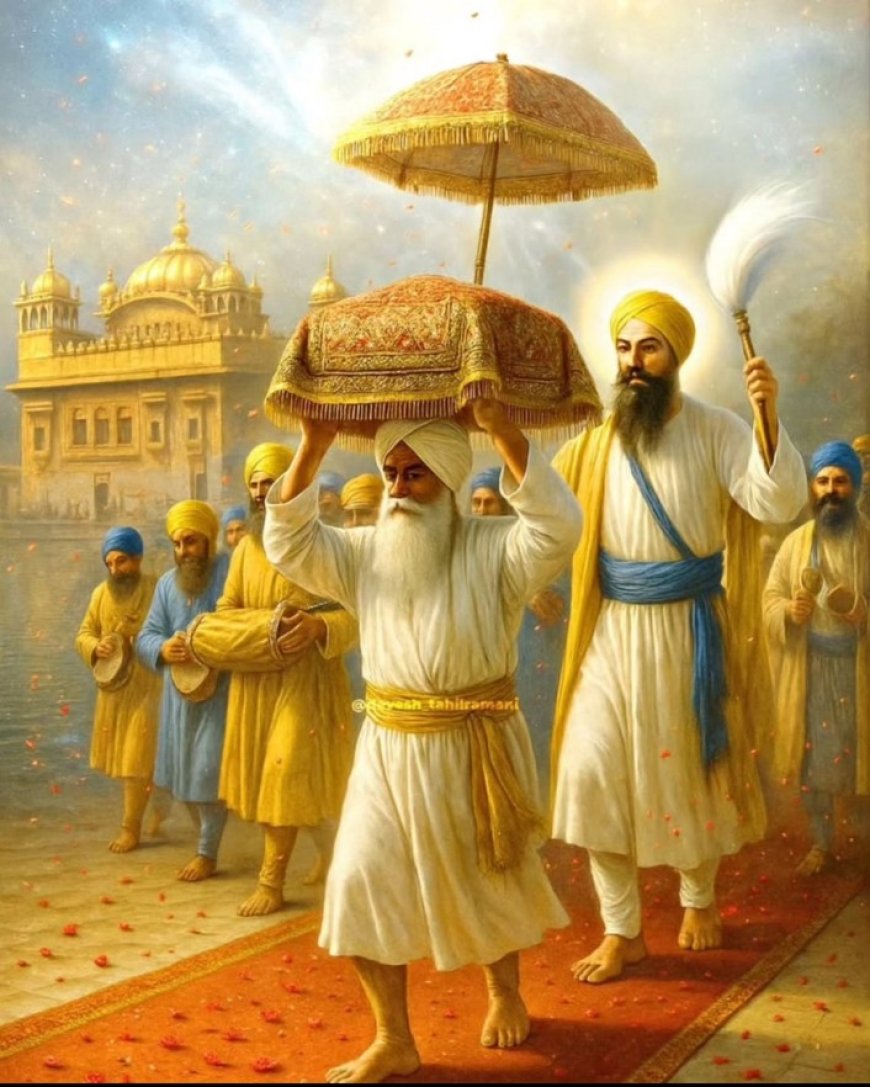Sikhs Globally Revere Guru Granth Sahib's Historic Legacy in Vibrant Rites
Sikhs worldwide honor Guru Granth Sahib’s eternal wisdom through vibrant rites, symbolizing unity, devotion, and cultural identity.

Introduction
The Sikh community across the world holds the Guru Granth Sahib Ji, the eternal Guru of Sikhism, in the highest reverence. Considered not just a holy scripture but the living spiritual guide, the Guru Granth Sahib Ji embodies centuries of wisdom, devotion, and universal messages of peace and equality. Globally, Sikhs express their devotion through vibrant religious rites, daily prayers, and grand celebrations that reinforce its eternal significance.
Historical Background
The Guru Granth Sahib Ji was first compiled in 1604 by the fifth Sikh Guru, Guru Arjan Dev Ji, at Amritsar. It brought together hymns, teachings, and spiritual poetry not only from Sikh Gurus but also from saints of different faiths, such as Hindu and Muslim mystics, thereby symbolizing unity and inclusiveness. Later, in 1708, the tenth Sikh Guru, Guru Gobind Singh Ji, bestowed the title of the eternal Guru upon the scripture, making it the spiritual authority for all Sikhs. Since then, it has remained the guiding force for Sikh spiritual and social life.
Why Sikhs Revere Guru Granth Sahib Ji
Sikhs revere the Guru Granth Sahib Ji because it transcends religion and caste, offering wisdom applicable to all humanity. It teaches core principles such as:
-
Ik Onkar (One God): Belief in the oneness of God.
-
Equality: Breaking social barriers of caste, gender, and status.
-
Seva (Service): Serving humanity selflessly.
-
Simran (Meditation): Remembering God through prayer and devotion.
Regional and Global Significance
-
In Punjab, India, the birthplace of Sikhism, Guru Granth Sahib Ji is central to every religious and cultural activity.
-
In Canada, UK, USA, and Australia, Sikh communities celebrate Akhand Path (continuous recitation), Nagar Kirtan (processions), and Gurpurabs with great devotion.
-
Globally, gurdwaras serve as community hubs, where the Guru Granth Sahib Ji is recited and its teachings are spread, strengthening cultural identity.
Key Points and Celebrations
-
Parkash Utsav: The celebration of the first installation of the Guru Granth Sahib Ji in 1604.
-
Akhand Path: A 48-hour continuous reading of the entire scripture.
-
Nagar Kirtan: Street processions with devotional singing.
-
Daily Hukamnama: A verse read daily for guidance.
Importance and Significance
-
Spiritual Unity: It brings Sikhs together regardless of where they live.
-
Cultural Identity: Maintains the Sikh heritage and traditions globally.
-
Universal Message: Promotes peace, love, and humanity across religions.
-
Living Guru: It ensures that the Sikh faith remains connected to divine teachings without dependence on human leadership.
Advantages
-
Provides timeless moral guidance.
-
Promotes harmony and inclusivity across diverse societies.
-
Preserves Sikh identity and unites the diaspora worldwide.
Disadvantages / Challenges
-
Misinterpretation of teachings by individuals with limited understanding.
-
Political misuse of Sikh sentiments tied to religion.
-
Modern distractions sometimes reduce the younger generation’s direct connection to the scripture.
Positives and Negatives
-
Positive: Global respect, increasing awareness of Sikhism, and its role in promoting interfaith dialogue.
-
Negative: Rising challenges in protecting religious values in a rapidly modernizing world.
Final Thoughts
The Guru Granth Sahib Ji is not merely a scripture but a living guide for Sikhs worldwide. Its universal values of equality, humility, and devotion continue to resonate beyond religion, making it an eternal beacon of light in a divided world.
Conclusion
The reverence Sikhs hold for the Guru Granth Sahib Ji goes beyond ritual; it is about embracing a way of life that honors service, justice, and spirituality. Despite challenges of modernization and cultural dilution, its teachings remain timeless. Globally, the vibrant rites associated with it keep Sikh identity strong, while also reminding humanity of the universal truth—that love and equality can unite all.

 Ellofacts
Ellofacts 





